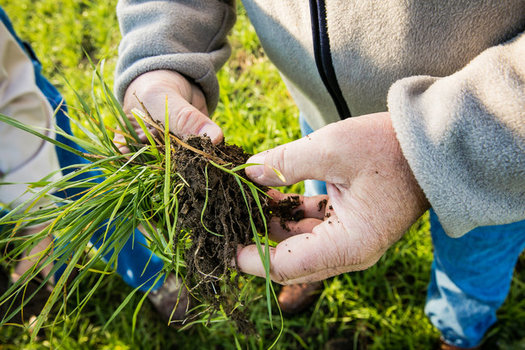
The prospect of heavy spring rains — linked to climate change — has led some farmers to use conservation measures to protect their fields.
Dennis Reer plants corn, soybeans and wheat at 5R Farms in Seneca County, and also grows cover crops in the off season, because living roots make the soil more porous so it can hold more water and nutrients in place.
"Water was a huge concern with runoff and nutrient loss," he points out. "Really excited about what we're seeing on our farm. The soil changed in the last three years just with the cover crops and improving the soil structure."
Reer does not till the soil, which keeps carbon and nitrous oxide in the ground. And he says better soil health means he spends less on chemical soil amendments.
Right now about 3% to 5% of Ohio farmers use these methods.
Jessica D'Ambrosio, Ohio agriculture director for The Nature Conservancy, says these practices not only promote clean air and water, they help farmers improve their yield, and withstand heavy rains.
"So the soil is a living resource," she states. "That's where the key nexus is between agriculture growing crops, and then mitigating and adapting to climate change and its impacts."
Last year's flooding severely eroded farms and carried nutrients off to the waterways, causing harmful algae blooms. Larry Clemen, Indiana state director for The Nature Conservancy, says it also caused costly delays.
"In many areas, we had a wet spring, so crops got planted late, which meant they got harvested late," he states.
The Nature Conservancy is working with farmers and local agricultural agencies to promote best practices, gather the data to prove that they work, and build a peer network of farmers who can support each other and troubleshoot going forward.





